
Ah, the 1930s – an era where automobiles weren’t just machines; they were rolling works of art, dressed to the nines in chrome, curves, and charisma. It was a period when the automotive industry, despite the global economic challenges of the Great Depression, made some of its biggest leaps, pushing forward with innovative solutions and breathtaking aesthetics that would forever redefine luxury and performance. This was a time when design itself became a powerful statement, merging technological progress with an almost poetic human creativity.
Picture this: long hoods that seemed to stretch into the horizon, gracefully swooping fenders that mimicked ocean waves, and headlights that looked as though they belonged at a lavish Gatsby party. These magnificent vehicles were more than just modes of transportation; they were grand events, spectacles that made onlookers pause and marvel. Each car was custom-tailored with an air of sophistication, an undeniable presence that commanded attention and respect on any boulevard or countryside road.
I still remember my grandfather’s eyes lighting up as he described the purr of those engines and the way people would stop and stare when one of these automotive deities cruised by. They weren’t just cars; they were symbols of optimism, embodying the excitement of a world rapidly changing through technological advances. So, buckle up—or rather, imagine it, as seat belts were still a novelty—and join us on a luxurious joyride through seven of the most prestigious Art Deco automobiles that reigned supreme during the 1930s and 1940s. This is where bold design met unapologetic opulence, and every drive was truly a parade.
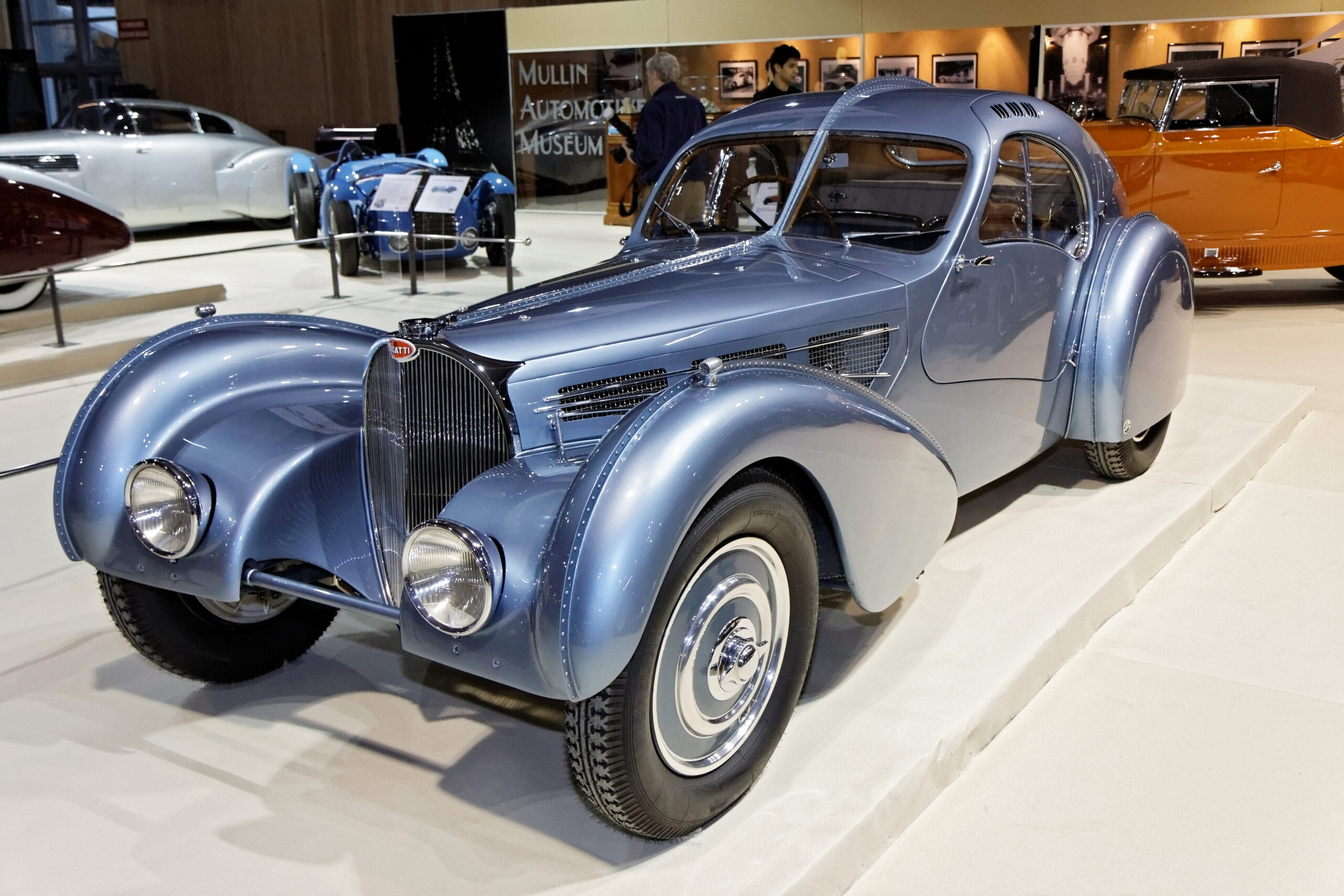
1. **Bugatti Type 57SC Atlantic**Two years after Talbot-Lago’s historical sports car, Bugatti unveiled its own masterpiece: the Type 57SC Atlantic Coupé. This magnificent machine quickly became the more popular of the two, making its debut in 1938 with its visually striking “La Voiture Noire” version. It elegantly proved that smaller sports cars could possess an equal, if not greater, degree of grace and sophistication, cementing Bugatti’s reputation for seamlessly blending luxury and exhilarating performance.
More than just a pretty face, the Type 57 was engineered as the ultimate grand tourer, powered by a potent 3.3-liter inline-8 engine that delivered 200 horsepower and an impressive top speed exceeding 125 mph. It was a true technological tour de force, notably constructed with Elektron, an avant-garde alloy composed of 90% magnesium and 10% steel. While revolutionary, Elektron presented a unique challenge: it was impossible to weld.
This material constraint led to one of the Atlantic’s most recognizable and enduring features: its distinctive dorsal seam, a series of rivets meticulously joining the body parts. This iconic design element, born out of necessity, continues to inspire some of Bugatti’s modern vehicles, linking past innovation with contemporary aesthetics. Its futuristic styling, characterized by bold, aerodynamic lines, art-deco-inspired chrome accents, a gracefully curved tail, and organically shaped wheel arches, bestows upon it a timeless, almost ethereal appearance.
Today, this rare masterpiece remains one of the most valuable and beautiful cars ever created. Designed by Jean Bugatti himself, the Type 57SC Atlantic featured that distinctive teardrop shape, further accentuated by its dramatic dorsal seam. With only four of these automotive marvels ever produced, its scarcity contributes significantly to its legend, ensuring its place not merely as a car, but as an irreplaceable piece of automotive royalty and design history.
Car Model Information: 2025 Alfa Romeo Stelvio Sprint
Name: Bugatti Type 57
Caption: 1936 Bugatti Type 57 Atalante
Manufacturer: Bugatti
Assembly: Molsheim
Production: 1934–1940,710 produced
Designer: Jean Bugatti
Class: Grand tourer
Engine: DOHC,Straight-8
Predecessor: Bugatti Type 49
Successor: Bugatti Type 101
Categories: 24 Hours of Le Mans race cars, Articles with short description, Bugatti automobiles, CS1 Romanian-language sources (ro), Cars introduced in 1934
Summary: The Bugatti Type 57 and later variants (including the famous Atlantic and Atalante) was a grand tourer built from 1934 through 1940. It was an entirely new design created by Jean Bugatti, son of founder Ettore. A total of 710 Type 57s were produced.
Type 57s used a straight-8 twin-cam engine of 3.3 L (3257 cc/198 in³) displacement. Bore and stroke were 72 mm by 100 mm based on that of the Type 49 but heavily modified by Jean Bugatti, unlike the single cam engines of the Type 49 and earlier models. The engines of the Type 50, 51 used bevel gears at the front of the engine to transmit power from the crankshaft, whereas the Type 57 used a train of spur gears at the rear of the engine, with fiber gear wheels on the camshafts to achieve more silence in operation.
There were two basic variants of the Type 57 car:
The original Type 57
The lowered Type 57S/SC
The Type 57 chassis and engine was revived in 1951 as the Bugatti Type 101. A rediscovered Type 57 was sold for 3.4 million euros at auction on 7 February 2009 at a motor show in Paris.
Get more information about: Bugatti Type 57
Buying a high-performing used car >>>
Brand: Bugatti Model: Type 57SC Atlantic
Price: $54,000 Mileage: 889 mi.
Read more about: Relics of the Past: 15 Exterior Designs You’ll Rarely Spot in Traffic Jams Today.
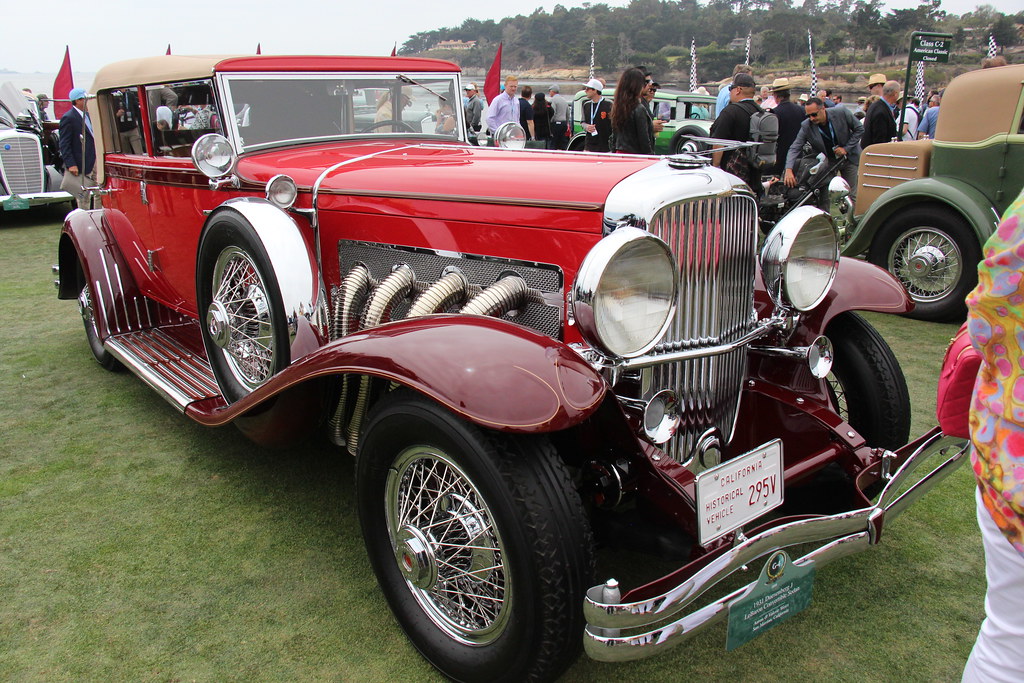
2. **Duesenberg Model J**In an era where Rolls-Royces were esteemed, it was the Duesenberg Motors Company that truly wore the crown of luxury. Their paramount offering, the Model J, launched in 1928, stood as an opulent and elegant statement piece, exclusively crafted for clients with the deepest of pockets. It represented the pinnacle of Art Deco design, commanding an incredible road presence even without the full streamlining seen in other models, its shiny chrome accents catching the eye with an almost jewel-like brilliance.
Yet, Duesenberg’s dominance wasn’t solely due to the sophisticated appearance of its vehicles; it was also a profoundly innovative brand. The Model J pioneered the introduction of hydraulic brakes and housed a groundbreaking straight-8 engine. This colossal 7.0-liter unit generated an astonishing 265 horsepower, a figure unheard of during that era, thanks to its highly advanced DOHC configuration with four valves per cylinder. A supercharged version, unleashed in 1932, further amplified the output to a staggering 320 horsepower.
These performance figures were nothing short of bonkers for a 1930s luxury car. The new Model J could rocket from zero to 60 mph in a mere eight seconds and achieve a top speed of 129 mph. To ensure maximum refinement, Duesenberg even employed vibration dampers filled with mercury, showcasing their relentless pursuit of perfection. This was a custom-built marvel, with bodywork meticulously designed by the world’s most prestigious coachbuilders, making each Model J a unique testament to bespoke luxury.
“It’s a Duesy!” was the exclamation often heard when the 1932 Duesenberg Model J majestically rolled into view. This car wasn’t just a vehicle; it was an event, a magnificent showstopper that effortlessly attracted Hollywood’s elite and the most discerning connoisseurs. My favorite story about its allure was of a famous actor who reportedly purchased one simply to perfectly match his tuxedo. Driving a Duesenberg, my family used to say, was akin to commanding your own grand parade, as everyone invariably stopped to watch.
Car Model Information: 2025 Alfa Romeo Stelvio Sprint
Name: Sfn
Caption: 1930 Duesenberg J Murphy Torpedo Convertible
Manufacturer: Duesenberg
Aka: Duesenberg J,Duesenberg SJ (supercharged),Duesenberg SSJ (short-wheelbase supercharged)
Production: 1928–1937,481 produced (445 Model J, 36 Model SJ)
Assembly: Indianapolis,Indiana,United States
Designer: Gordon Buehrig
Class: Luxury vehicle
BodyStyle: Coachbuilt to owner’s preference
Layout: Front-engine, rear-wheel-drive layout#Front mid-engine, rear-wheel-drive layout
Engine: 420 cuin
Abbr: on
Disp: Sfn
Transmission: Manual transmission
Wheelbase: {{convert,142.5,in,mm,1,abbr=on,disp=flip
Predecessor: Duesenberg Model A
Sp: us
Categories: 1930s cars, All articles with unsourced statements, Articles with short description, Articles with unsourced statements from December 2013, Articles with unsourced statements from June 2012
Summary: The Duesenberg Model J is a luxury automobile made by Duesenberg exclusively in 1928 and offered for ten subsequent years. Intended to compete with the most luxurious and powerful cars in the world, it was introduced in 1928, the year before the stock market crash that led to the Great Depression. Duesenberg Motors Company went bankrupt in 1937.
Get more information about: Duesenberg Model J
Buying a high-performing used car >>>
Brand: Duesenberg Model: Model J
Price: $54,000 Mileage: 889 mi.
Read more about: Timeless Icons: 14 Classic 1960s Cars That Continue to Captivate Enthusiasts and Turn Heads
3. **Cord 810/812**The Cord 810/812 was an automobile truly ahead of its time, a fascinating marvel that integrated a plethora of high-tech features we now often take for granted. This innovative machine boasted variable speed windshield wipers, a built-in radio, a disappearing convertible top, and, most significantly for its era, front-wheel drive. This revolutionary front-wheel-drive system allowed Cord to eliminate the propeller shaft, bringing the car’s profile significantly closer to the ground, a design advantage inherited from its predecessor, the L-29, which was celebrated as the first-ever FWD car.
Despite the common misconception that front-wheel drive compromises performance, the 810/812 powerfully challenged this notion. It housed a robust 4.7-liter V8 engine, producing a commendable 125 horsepower in its standard configuration, with a supercharged variant boosting output to an impressive 170 horsepower. Both versions were paired with an advanced four-speed transmission, featuring a Bendix Electric Hand shifter, further solidifying its reputation for cutting-edge engineering.
Affectionately known as the “baby Duesenberg,” the 810/812 certainly earned its moniker, a far more fitting title than its other popular, albeit less flattering, nickname of “coffin nose.” This model was unquestionably one of the coolest cars available during the 1930s. Its distinctive “coffin nose,” characterized by a low, wide grille, endowed it with an undeniable road presence, while its streamlined body provided a profoundly sophisticated aesthetic.
The Cord 810/812 even featured concealed headlights, an engineering marvel that cranked its Streamline Moderne appeal to an ecstatic eleven. This groundbreaking concept, with headlights hidden behind panels when not in use, shocked the automotive world with its revolutionary design. My grandmother often remarked that it looked like something Flash Gordon would drive, a testament to its strikingly futuristic appearance, a true automotive dream wrapped in the exquisite styling of Art Deco.
Read more about: Hidden Gems of the Highway: 14 Classic Cars That Revolutionized the Road and Then Vanished from Memory
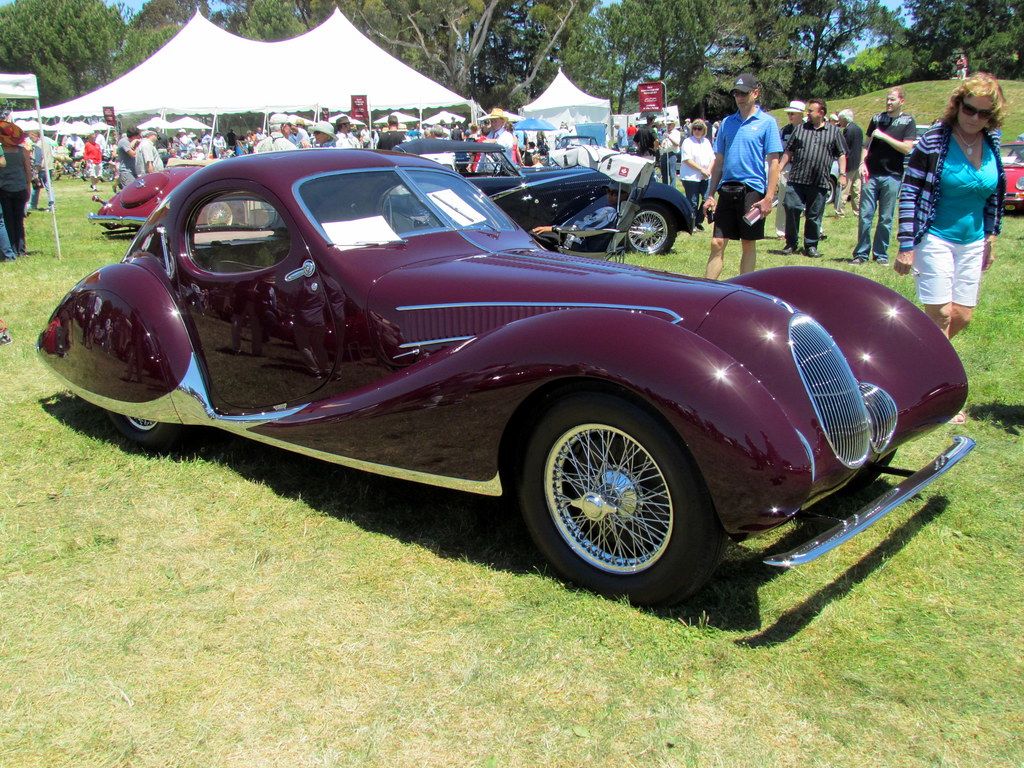
4. **Talbot-Lago T150C SS Teardrop Coupe**Among the most breathtaking automobiles to emerge from the Streamline Moderne era, the Talbot-Lago T150C SS Teardrop Coupe stands as an icon. Often regarded as one of the most stunning cars ever to grace the road, it remains an unforgettable sports car from the 1930s that undeniably merits another look. Designed by the illustrious coachbuilders Figoni et Falaschi, this long-wheelbase T150C Teardrop Coupe carved an indelible mark in automotive history, redefining elegance and aerodynamic grace.
The car’s almost liquid appearance, achieved through exquisitely sculpted hood and fenders, lent it a fluidity and dynamism atypical for its period. The elegant teardrop roof and rear end further accentuated its sleek, aerodynamic styling, culminating in a form that seemed to defy mechanical constraints. Figoni et Falaschi’s meticulous attention to detail extended to every aspect, from the minimalistic chrome accents and gorgeous multi-spoke wheels to the aeronautical-like windows. Above all, it is the impeccable proportions that transform the Talbot-Lago T150C into a moving sculpture.
This feast for the eyes was not merely a design exercise; it was also a formidable performer, engineered with racing firmly in mind by the talented Antonio Lago. The 150C SS featured a lightweight design coupled with advanced technology, including an independent front suspension and a 4.0-liter inline-6 engine equipped with hemispherical chambers. This powerhouse produced 140 horsepower, or 165 horsepower in its high-compression variant, enabling the car to exceed 115 mph.
Known quite aptly as the Teardrop Coupe, this French masterpiece epitomized Art Deco elegance and aerodynamic design. Its incredibly smooth, flowing bodywork seemed to inherently understand and defy the very concept of wind resistance. My grandmother, with her keen eye for beauty, always said it looked as if it had been sculpted by the wind itself. The Talbot-Lago T150C SS was truly more than a car; it was a celebrated racing champion and an undeniable work of art, capturing the imagination of car enthusiasts and art critics worldwide.
Read more about: 15 Of The Most Beautiful Pre-War Cars Ever Built
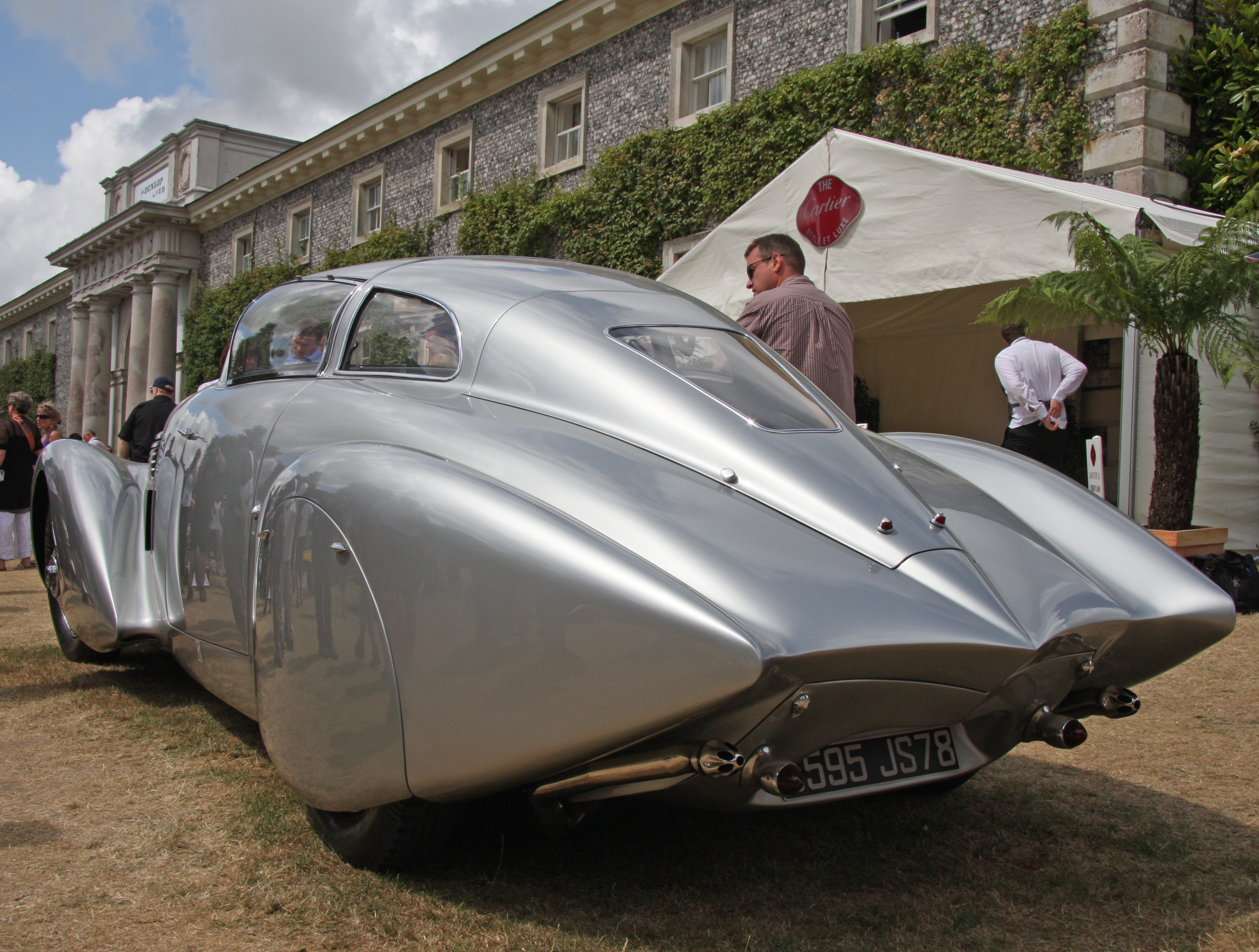
5. **Hispano-Suiza H6C Dubonnet Xenia**While today Hispano-Suiza might be recognized for its extravagant, often polarizing Carmen Boulogne hyper EV, the brand’s legacy is deeply rooted in the Spanish auto industry’s golden age, particularly for producing some of the most luxurious cars during the Art Deco era. Perhaps the most handsome machine to emerge from this period was the H6C Dubonnet Xenia, a streamlined automobile that, to many, still far surpasses its modern inspiration, the Carmen Boulogne.
This stunning vehicle was penned by André Dubonnet, an extraordinary individual who was not only an aviator but also a racing driver and athlete. The Dubonnet Xenia stands as one of the finest embodiments of the Streamline Moderne movement, its design profoundly extravagant even among its contemporaries. It featured distinctive teardrop-shaped wheel arches and a massive grille that gracefully extended to the sides of the hood, creating an unparalleled visual impact.
The Xenia’s bubble roof and wraparound windshield drew clear inspiration from fighter jets, imbuing it with a futuristic, almost aeronautical flair. Further enhancing its lavish design were a shark-like tail and intricate concentric-circle wheels, all contributing to an aesthetic that truly transcended its time. Dubonnet meticulously built this stunner atop the chassis of the Hispano Suiza H6C, ensuring a foundation of established excellence.
Consequently, the Dubonnet Xenia was equipped with the brand’s powerful 8.0-liter engine, an inline-6 unit developed from Hispano-Suiza’s renowned V12 airplane engines. This marvel produced a robust 160 horsepower, paired with a four-speed manual transmission, culminating in a luxurious grand tourer capable of reaching speeds up to 110 mph. The car was a true marvel of innovation, featuring a revolutionary independently sprung suspension system and a body so advanced it seemed to belong in a science fiction movie, representing a perfect marriage of technological prowess and artistic expression.
Car Model Information: 2025 Alfa Romeo Stelvio Sprint
Name: Hispano Suiza
Logo: New Logo of Hispano Suiza.png
Fate: Safran
KeyPeople: Miguel Suqué Mateu (President), Sergio Martinez Campos (CEO), Juan Fernandez (CTO), Francesc Arenas (Head of Design), Victor Cobos (CMO)
Foundation: June 14, 1904
LocationCity: Barcelona
LocationCountry: Catalonia,Spain
Industry: Manufacturing
Founders: Marc Birkigt,Damián Mateu,Francisco Seix
Products: Automobiles, formerly also aviation components
Parent: Grup Peralada
Website: [https://www.hispanosuizacars.com/ hispanosuizacars.com]
Categories: Aircraft engine manufacturers of France, Aircraft engine manufacturers of Spain, All articles with unsourced statements, Articles with short description, Articles with unsourced statements from July 2021
Summary: Hispano-Suiza (Spanish for ‘Spanish-Swiss’) is a Spanish automotive company. It was founded in 1904 by Marc Birkigt and Damián Mateu as an automobile manufacturer and by the 1930s had several factories in Spain and one in France that produced luxury cars, aircraft engines, trucks and weapons.
In 1923, its French luxury car arm became a semi-autonomous partnership with the Spanish parent company. In 1937, the French arm was taken over by the French state for war production and after World War II continued as an independent aviation engine and components manufacturer under the Hispano-Suiza name. In 1968, the company was taken over by the aerospace company Snecma, which is now part of the French Safran Group. Meanwhile, during the Spanish Civil War, Hispano-Suiza’s Spanish factories in Barcelona and Seville were taken over by both sides for war production. In 1946, its Spanish assets were taken over by the truck manufacturer ENASA.
The relaunch of Hispano Suiza Cars in Spain has been made by the same founding family (4th generation of the Suqué Mateu Family); the company is part of the Peralada Group (owned as well by the Suqué Mateu family) in 2019 with a fully-electric 1,119 HP hypercar called Hispano-Suiza Carmen.
Get more information about: Hispano-Suiza
Buying a high-performing used car >>>
Brand: Hispano-Suiza Model: H6C Dubonnet Xenia
Price: $54,000 Mileage: 889 mi.
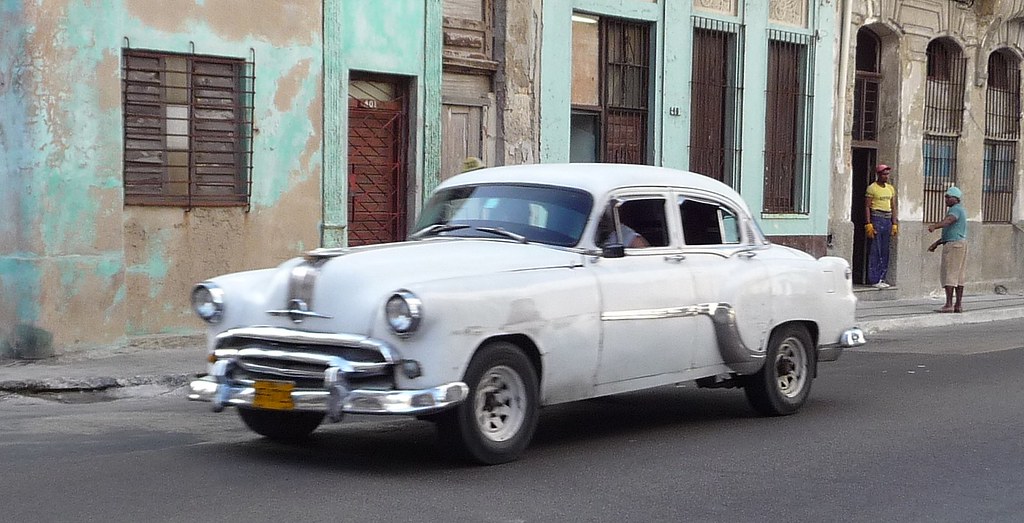
6. **Auburn 851/852 Speedster**The Auburn Automobile Company, though no longer in existence, bequeathed to automotive history some of the coolest-looking cars of its time, with the 851/852 Speedster widely regarded as its crowning achievement. This classy sports car exuded an incredibly graceful design and a powerful road presence, solidifying its status as one of the most handsome automobiles of its era. Its streamlined, sculptural shape meticulously adhered to the Art Deco rulebook, yet its perfectly stretched-out proportions bestowed upon it a timeless look that continues to resonate with enthusiasts today.
Performance matched its breathtaking aesthetics, as the 851 Speedster — which evolved into the 852 Speedster in 1936 — was as formidable as it was beautiful. Auburn chose a robust 4.8-liter Lycoming straight-8 engine, which, in its base form, produced a respectable 115 horsepower. For those seeking even more exhilaration, a supercharger version bumped the output to a thrilling 150 horsepower. This powerful configuration allowed the model to achieve a top speed of 102.5 mph, a remarkable feat for an open-top sports car of the 1930s.
This car was truly all about the thrill of the drive, offering both exhilarating speed and unparalleled elegance in equal measure. Its most famous characteristic was undoubtedly the chrome-covered exhaust pipes that elegantly ran along the side of the car, a distinctive design element that became instantly recognizable and synonymous with the Auburn Speedster’s bold statement. Its unique boat-tail design further ensured its standout presence on any road.
My grandfather, with a twinkle in his eye, used to declare it “a bullet with style,” perfectly encapsulating its blend of swiftness and sophistication. Unfortunately, the 851/852 Speedsters marked the final models produced by Auburn. In 1937, owner Errett Lobban Cord divested his holdings in the Cord Corporation, a move that regrettably forced the Auburn brand to cease production, leaving behind a legacy of automotive artistry and adventure.
Car Model Information: 2025 Alfa Romeo Stelvio Sprint
Name: Auburn Speedster
Caption: 1935 Auburn Boattail Speedster 851SC
Manufacturer: Auburn Automobile
Assembly: Auburn, Indiana,Union City, Indiana
Production: 1925–1937
Designer: Gordon Buehrig
BodyStyle: Roadster (automobile)
Engine: Lycoming Engines
Transmission: Three speed manual with synchromesh on second and third ratios in ‘high’
Length: convert
Width: convert
Weight: convert
Categories: All articles needing additional references, All articles with unsourced statements, Articles needing additional references from August 2012, Articles needing additional references from December 2020, Articles with short description
Summary: The Auburn Speedster is an American car, manufactured by the Auburn Automobile Company of Auburn, Indiana, and manufactured in Union City, Indiana. A total of 887 cars were manufactured between 1928 and 1936, across 3 series (1928-1930 with “eight” and “big eight” engines, 8 cylinder 1931-1933, 12 cylinder 1932-1934, and the dramatic, iconic 1935-36 Supercharged 8). The first two series were designed by stylist Alan Leamy. The Auburn 851 Speedster of 1935 was styled by designer Gordon Buehrig, who also was responsible for the Cord Model 810. Al Jenkins broke 70 American speed records in the 1935 car.
Get more information about: Auburn Speedster
Buying a high-performing used car >>>
Brand: Auburn Model: 851/852 Speedster
Price: $54,000 Mileage: 889 mi.
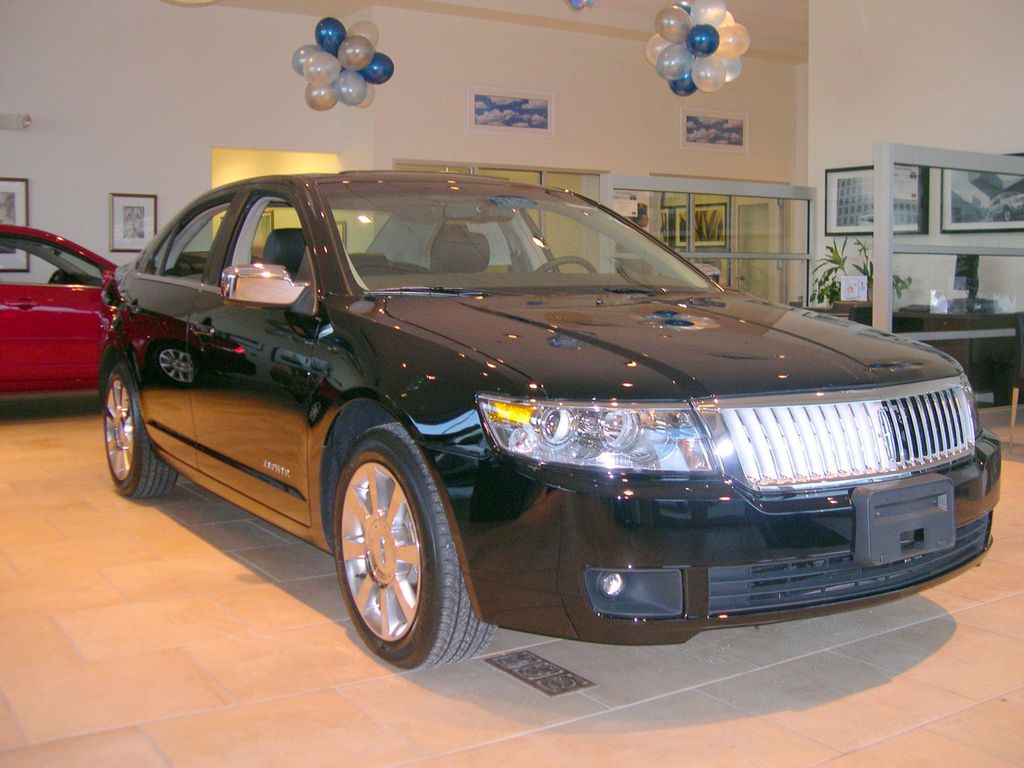
7. **Lincoln Zephyr**While the Lincoln Continental possessed a peculiar charm, it was ultimately the Zephyr that established many of the common design practices that would define the Lincoln brand for years to come. Elements such as its distinctive V-shaped nose, graced by a huge grille, the fluidly flowing wheel arches, the recessed windows, and the integrated, oval headlights all trace their lineage back to the Zephyr. This influential model also pioneered broader design choices, including its streamlined body and the elegant teardrop-style rear end and trunk.
Easily one of the most striking luxury cars of the 1930s, the Zephyr played a pivotal role in solidifying Lincoln’s position as a major player in the burgeoning luxury automotive market. Mirroring the Continental, Lincoln equipped the Zephyr with a formidable V12 engine, paired with a three-speed transmission. The initial 4.4-liter engine produced 110 horsepower, sufficient for a top speed of 90 mph, and was later upgraded to a more powerful 4.8-liter V12 in 1941. Unlike the Continental, the Zephyr was also available as a sedan, enhancing its versatility and appeal.
The Zephyr’s enduring legacy extends beyond its breathtaking design; it was also one of the first cars to feature a unibody construction. This innovative approach significantly contributed to a smoother ride, particularly over bumpy roads, and substantially lowered its overall weight to approximately 3,300 pounds. Its lower stance also made ingress and egress notably easier, enhancing passenger comfort and accessibility, a forward-thinking design consideration.
This automotive marvel introduced aerodynamic design to mainstream American automobiles, with its streamlined body drawing clear inspiration from efficient train designs, featuring smooth, continuous lines engineered to reduce wind resistance. Launched in 1936, the Zephyr transcended the definition of a mere car; it was a profound statement about the future of automotive design, a technological marvel of its time, celebrated for its innovative unibody construction and its powerful V12 engine.
Buying a high-performing used car >>>
Brand: Lincoln Model: Zephyr
Price: $8,999 Mileage: 58,159 mi.
Read more about: Beyond the Horizon: The 15 Most Comfortable Cars for Long Road Trips, Reviewed by Experts

8. **Voisin C27 Aérosport**Transitioning from the established giants, let us cast our gaze upon a vehicle that truly set the stage for aerodynamic revolution: the Voisin C27 Aérosport. Debuting at the 1934 Paris Motor Show, this striking sports coupé, based on the quirky C25 Aérodyne, was purposefully shortened and lowered to achieve an even sportier, more dynamic silhouette. It heralded a new era of low-slung, streamlined vehicles, influencing future designs from other esteemed marques.
Crafted with the quintessential Streamline Moderne style, the C27 Aérosport captivated onlookers with its elongated hood and a gracefully tapering teardrop rear end. Its proportions were meticulously stretched, imbuing the car with a fluid, dynamic appearance that seemed to effortlessly cut through the air. Yet, Voisin, unlike Bugatti and Talbot-Lago, embraced a distinctive artistic philosophy, weaving bold geometric patterns into other aspects of its design.
This commitment to geometric artistry manifested in angular windows and intricate, ornate chrome detailing, lending the C27 Aérosport an avant-garde aesthetic that remains profoundly striking even to this day. It was a vehicle that dared to defy conventional beauty standards, proposing a future where elegance could coexist with a bold, almost architectural precision. This blend of fluid lines and sharp angles created a unique visual symphony.
Beyond its arresting design, Voisin’s automobile was also a marvel of advanced engineering for its time. Among its most notable features were a sophisticated sliding roof mechanism, transforming the coupé into an open-air roadster at will, and state-of-the-art adjustable hydraulic shock absorbers, promising a ride of unprecedented comfort and control. Beneath its angular bonnet hummed a 4.0-liter, sleeve-valve inline-6 engine, producing 110 horsepower, specifically engineered for exceptional smoothness rather than raw performance, a testament to Voisin’s pursuit of refined luxury.
Car Model Information: 2025 Alfa Romeo Stelvio Sprint
Name: Avions Voisin
Logo: 1924 Avions Voisin C4 logo, four cylinder without valve 8CV Coach body, 4 seats, at the Musée Automobile de Vendée.JPG
LogoCaption: Logo anno 1924
Location: Issy-les-Moulineaux
Foundation: 1905
Defunct: 1946
Founder: Gabriel Voisin
Industry: Manufacturing
Products: Automobile,airplane
Categories: Articles with short description, Car brands, Car manufacturers of France, Cars powered by Knight engines, Commons category link is on Wikidata
Summary: Avions Voisin was a French luxury automobile brand established by Gabriel Voisin in 1919 which traded until 1939.
Get more information about: Avions Voisin
Buying a high-performing used car >>>
Brand: Voisin Model: C27 Aérosport
Price: $54,000 Mileage: 889 mi.

9. **Chrysler Thunderbolt**In 1941, as the world teetered on the brink, Chrysler unveiled a prototype that seemed to pierce through the gloom with a vision of the future: the Chrysler Thunderbolt. Never destined for mass production, this concept car was arguably one of the most impressive ever showcased by the company, a pristine specimen of Art Deco streamlining. It radiated an undeniable futurism, with its exquisitely graceful side profile and subtle copper details hinting at its innovative spirit.
The Thunderbolt’s boldest aesthetic statement was perhaps the complete absence of a front grille, a design choice that strikingly evokes the minimalist, seamless look of today’s electric vehicles. This radical approach demonstrated Chrysler’s conviction that “less is more” in automotive design, making the Thunderbolt truly ahead of its time and establishing it as a benchmark for pure, uninterrupted lines.
Yet, the Thunderbolt was far from just a visual spectacle; it was a technological tour de force. It astonished the automotive world with its pop-up headlights, an audacious feature for 1941, alongside a retractable hardtop, electro-hydraulic doors, and electric windows. The doors themselves opened with simple push buttons, a detail that underscored Chrysler’s relentless pursuit of a flawlessly streamlined appearance, eliminating any visual interruptions.
Further cementing its advanced status, this model was equipped with a three-speed semi-automatic transmission featuring overdrive, a technology that would only become widespread in automobiles after the war concluded. Named after Captain George Eyston’s 1938 land speed record-holding car, the Thunderbolt needed an engine to match its formidable credentials. Under its beautiful, uninterrupted bonnet lay a 5.3-liter inline-8 “Spitfire” engine, producing 143 horsepower, allowing it to reach a top speed exceeding 100 mph. While not quite the record-breaking 369 mph of its namesake, it certainly justified its moniker and cemented its place as a priceless piece of automotive history, exemplified by a mint-condition Thunderbolt selling for $935,000 in a 2011 auction.
Read more about: Beyond the Icons: Unearthing 14 Underappreciated Muscle Cars That Deserve Your Attention
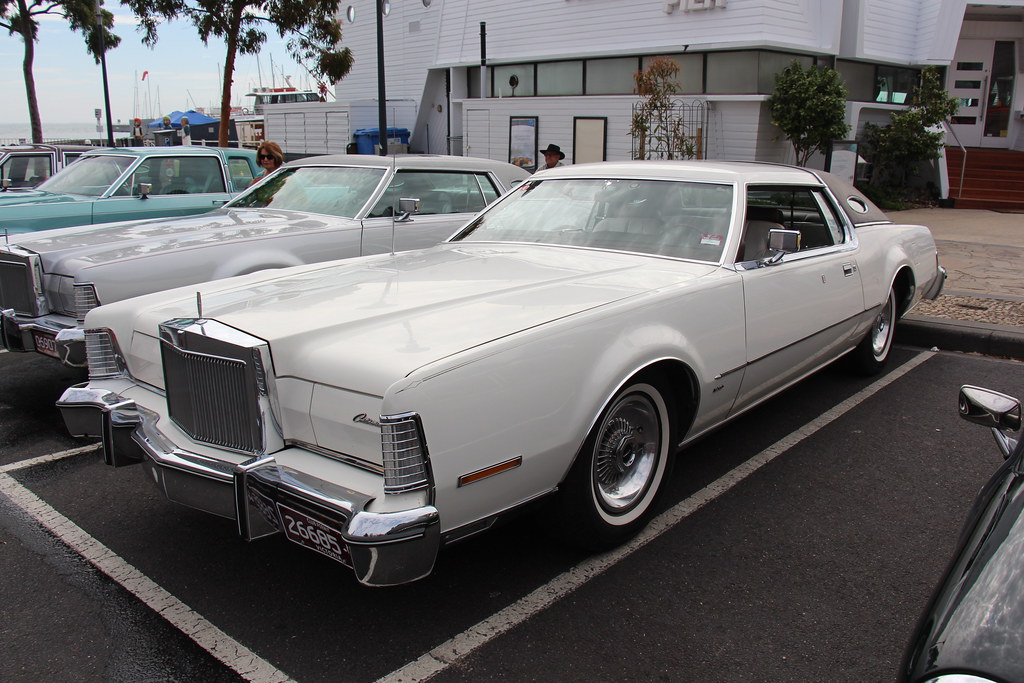
10. **Lincoln Continental**Launched amidst the turbulent tides of war, the first-generation Lincoln Continental, available in both coupé and convertible body styles from 1940 to 1941, immediately established itself as perhaps the classiest car ever conceived. It meticulously adhered to the principles of Art Deco, boasting a sharp, dignified front end, flowing lines, and a streamlined side profile that collectively redefined the very essence of luxury automobiles for generations to come.
This iconic vehicle was instrumental in inaugurating the legendary “Continental look,” a design language characterized by its substantial C-pillar and a distinctive notchback roofline. Its revolutionary placement of the spare tire on top of the trunk lid also had a profound influence, inspiring numerous cars throughout the 1950s. The Continental’s genesis is a fascinating tale, with E.T. Gregorie designing it at the behest of Edsel Ford, who was reportedly inspired by a transformative trip to Europe.
Gregorie masterfully captured the sophisticated aesthetic that Ford envisioned, a testament to his discerning eye for elegance. It is no surprise that the businessman himself cherished a 1941 convertible model, understanding its profound appeal. For those who feel a sense of déjà vu, the Continental’s enduring presence might be attributed to its memorable role in “The Godfather,” widely celebrated as one of the greatest films of all time, further cementing its legendary status in popular culture.
The first Continental emerged at a time when the V8 engine was still in its nascent stages. However, beneath its elegant, boat-like bonnet, this automobile housed a formidable 4.8-liter V12 engine, capable of generating 120 horsepower. This powerhouse was seamlessly paired with a three-speed manual transmission featuring overdrive, transforming it into an exceptionally capable long-distance cruiser. In 1940, the Continental commanded a starting price of $2,778, which translates to approximately $64,000 in today’s currency, a testament to its premium status. Surprisingly, this classic car remains relatively accessible in the modern era; the very 1941 Continental Coupé featured in “The Godfather” was sold for $69,000 at a 2013 Bonhams Cars auction, offering a unique opportunity to own a piece of cinematic and automotive history.
Read more about: Beyond the Horizon: The 15 Most Comfortable Cars for Long Road Trips, Reviewed by Experts

11. **Tatra T77**When we speak of low-slung vehicles, few marques in the 1930s executed the concept with greater mastery than Tatra, particularly with its groundbreaking T77 model. Widely hailed by many as the first car conceived from the ground up with aerodynamic efficiency as its paramount design principle, the T77 boldly positioned its engine in the rear, behind the rear axle. This unconventional, yet visionary, approach — later emulated by iconic vehicles like the VW Beetle — obviated the need for a propeller shaft to traverse the car’s body, allowing Tatra to achieve an exceptionally low stance, bringing the vehicle noticeably closer to the ground.
Beyond its revolutionary engineering, it was the T77’s design that elevated it to an iconic status. Tatra famously leveraged wind tunnel testing to meticulously optimize the airflow around the car’s body, even going so far as to integrate a distinctive fin at the rear, a daring attempt to enhance stability at speed. The culmination of this scientific approach was an astonishing drag coefficient of 0.22 CD, a figure that remains impressive even by contemporary standards. While efficiency was the primary driver, this innovative methodology yielded a vehicle of striking appearance, far more futuristic than its contemporaries.
Long, gracefully low-slung, and fluid in its form, the T77 exudes a timeless elegance that continues to captivate enthusiasts today. Its sleek lines and understated sophistication belie a profound engineering philosophy. In contrast to its powerful American rivals, Tatra did not possess a colossal engine, a strategic divergence in its design philosophy. The T77 was equipped with an air-cooled 3.0-liter V8, featuring hemispherical combustion chambers, which, while only producing 60 horsepower, was a marvel of efficiency and packaging.
Remarkably, thanks to its meticulously streamlined body, the T77 could still achieve a respectable top speed of 87 mph, a performance figure comparable to many luxury cars of its era. Further enhancements came in 1935 with the introduction of a more potent 75-horsepower, 3.4-liter V8, boosting its top speed to an impressive 93 mph. While the T77 may not have achieved widespread commercial success, its legacy is profound, as Tatra continued to produce rear-engine, air-cooled V8 sedans until as late as 1999, cementing its pioneering influence on automotive design and engineering.
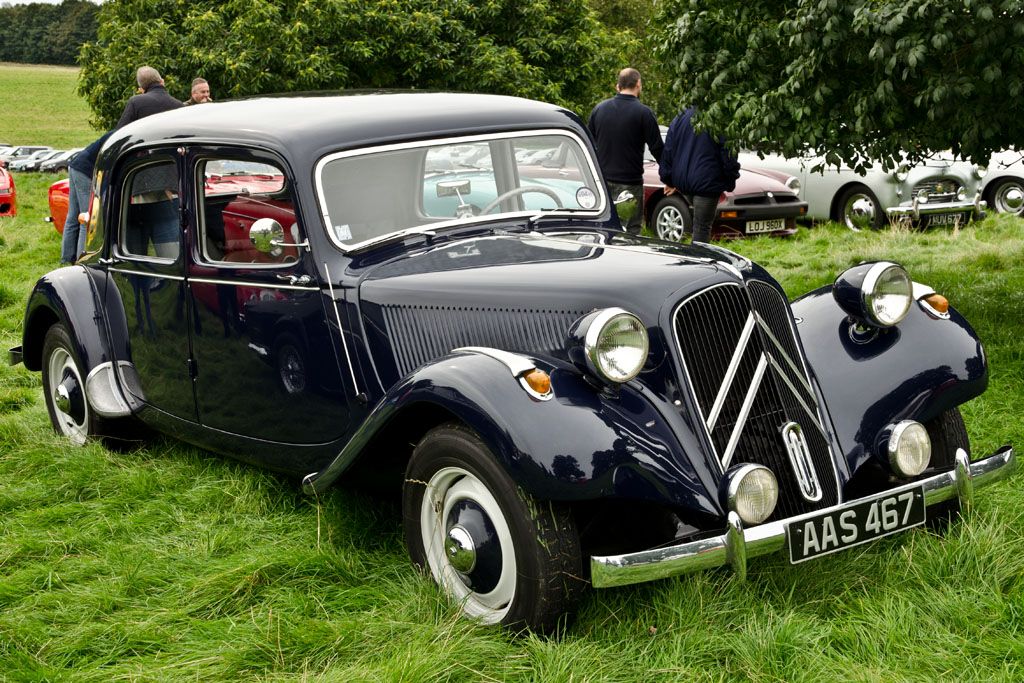
12. **Citroën Traction Avant**Across the Atlantic, the French automaker Citroën was commanding attention with its revolutionary Traction Avant, a vehicle that could be argued was the single most innovative of its era. This masterpiece showcased a groundbreaking monocoque structure paired with a pioneering front-wheel-drive architecture, a combination that allowed Citroën to drastically lower the vehicle’s height. The result was a noticeably low stance for a 1930s automobile, a design marvel that enhanced both aesthetics and stability.
The car’s innate elegance was further accentuated by its streamlined wheel arches, a long, commanding bonnet, and gracefully sloping side windows, all contributing to an overall aesthetic that was both sophisticated and distinctly modern. Beyond its pleasant looks, the Traction Avant outperformed its rivals in numerous other critical areas, setting new benchmarks for automotive excellence.
It boasted independent front and rear suspensions, offering a ride quality far superior to many of its contemporaries. Hydraulic brakes provided robust stopping power, and from 1936 onwards, it incorporated rack and pinion steering, delivering a level of precision and responsiveness that was truly advanced for the time. Later, with the 1954 Traction Avant 15 Six H, Citroën introduced its innovative hydropneumatic suspensions, a technology far ahead of its time, showcasing the brand’s relentless pursuit of engineering innovation.
Perhaps the only aspect where the Traction Avant lagged behind its powerful American counterparts was its engine output. The most formidable unit offered by Citroën was a 100-horsepower, 3.8-liter V8, while the base engine was a more modest 1.9-liter four-cylinder. However, the monocoque structure had rendered the Traction Avant incredibly lightweight, with its weight as low as 2,500 pounds. This exceptional lightness meant that even 100 horsepower was sufficient to achieve a top speed of 87 mph, while simultaneously endowing the vehicle with an agility and comfort that truly surpassed its contemporaries, solidifying its place as a true icon of automotive ingenuity.
Car Model Information: 2025 Alfa Romeo Stelvio Sprint
Name: Citroën Traction Avant
Aka: Citroën Traction Avant#UK-built cars
Manufacturer: Citroën
Production: 7: 1934–1941,11: 1934–1957,15/6: 1938–1956
Assembly: Paris
Predecessor: Citroën Rosalie,Citroën C4 & C6
Successor: Citroën DS
Transmission: manual transmission
Class: Executive car
Layout: MF layout
Related: Citroën H Van
BodyStyle: sedan (car)
Engine: Straight-4
Wheelbase: 2910 mm
Abbr: on11CV longue & 15/6 limousine
Length: convert
Width: convert
Height: convert
Weight: convert
Designer: Flaminio Bertoni,André Lefèbvre
Sp: uk
Categories: 1940s cars, 1950s cars, All articles that may contain original research, All articles with dead external links, All articles with unsourced statements
Summary: The Citroën Traction Avant (French pronunciation: [tʁaksjɔnaˈvɑ̃]) is the world’s first mass-produced, semi-monocoque bodied, front-wheel drive car. A range of mostly four-door saloons and executive cars, as well as longer wheelbased “Commerciale”, and three row seating “Familiale” models, were produced with four- and six-cylinder engines, by French carmaker Citroën from 1934 to 1957. With some 760,000 units built, the Traction Avants were the first front-wheel drives made in such (six-figure) quantity.
Whilst front-wheel drive and four-wheel independent suspension had been established in production cars by Auto Union, and subsequently by others a few years prior – the Traction Avant pioneered integrating these into a mass-production car with a crash resistant, largely unitary, monocoque body. Additionally, the car was also an early adopter of rack and pinion steering.
Although the car’s name (“Traction Avant” literally means “front traction”) emphasized its front-wheel drive power delivery, the car stood out at least as much by its much lower profile and stance – made possible by the absence of a separate vehicle frame or chassis under the car’s mostly unitary body – sharply distinguishing it visually from its taller contemporaries.
Get more information about: Citroën Traction Avant
Buying a high-performing used car >>>
Brand: Citroën Model: Traction Avant
Price: $54,000 Mileage: 889 mi.
Read more about: 13 Underappreciated Wagons: Unearthing Automotive Utility’s Hidden Gems
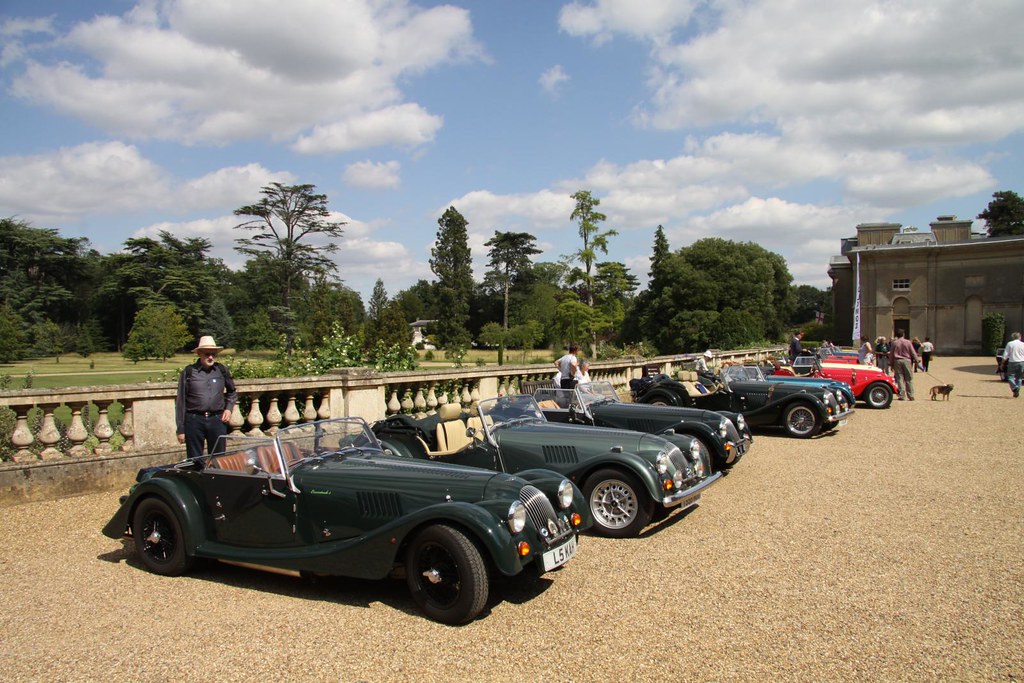
13. **Norman E. Timbs Buick Streamliner**As we venture slightly beyond the strict confines of the 1930s, we encounter a singular automotive art masterpiece that, despite its breathtaking design and engineering prowess, regrettably receives less recognition than it so richly deserves: the 1948 Norman E. Timbs Buick Streamliner. Conceived by its namesake, Norman E. Timbs, this concept car possesses an organic, almost ethereal, yet profoundly futuristic shape, evoking the graceful contours of a majestic marine creature gliding through water.
The Streamliner’s low, wide grille, seamlessly integrated with its headlights, further refined the aerodynamic aesthetic, while its absolutely stunning side profile bestows upon it an elegance that few other automobiles, even today, can truly rival. Spanning an impressive 17.5 feet in length, the Streamliner must have presented an even more mesmerizing and graceful spectacle in person, its elongated form commanding attention and awe.
What makes its construction all the more impressive is that its body was meticulously crafted from two substantial chunks of aluminum, a feat that resulted in only a single, almost imperceptible, gap in the entire car. This fluid, seamless construction creates an illusion of perpetual motion, as if the Streamliner is in graceful transit even when perfectly stationary, a testament to its visionary design and the artisanal skill involved.
This one-of-a-kind vehicle is celebrated not merely for its gorgeous design; Norman E. Timbs, after all, was a distinguished mechanical engineer, and the Streamliner’s chassis layout is arguably even more remarkable. Drawing inspiration from the formidable V16-powered race cars of Audi (then Auto Union), Timbs ingeniously positioned the Buick Streamliner’s inline-8 engine in the middle of the car, a radical approach for its time. This meticulous engineering, combined with its featherlight curb weight of just 2,200 pounds and its incredibly slippery body, allowed the 200-horsepower engine to propel the Streamliner to an exhilarating top speed of 120 mph, embodying a perfect fusion of artistry and raw performance.
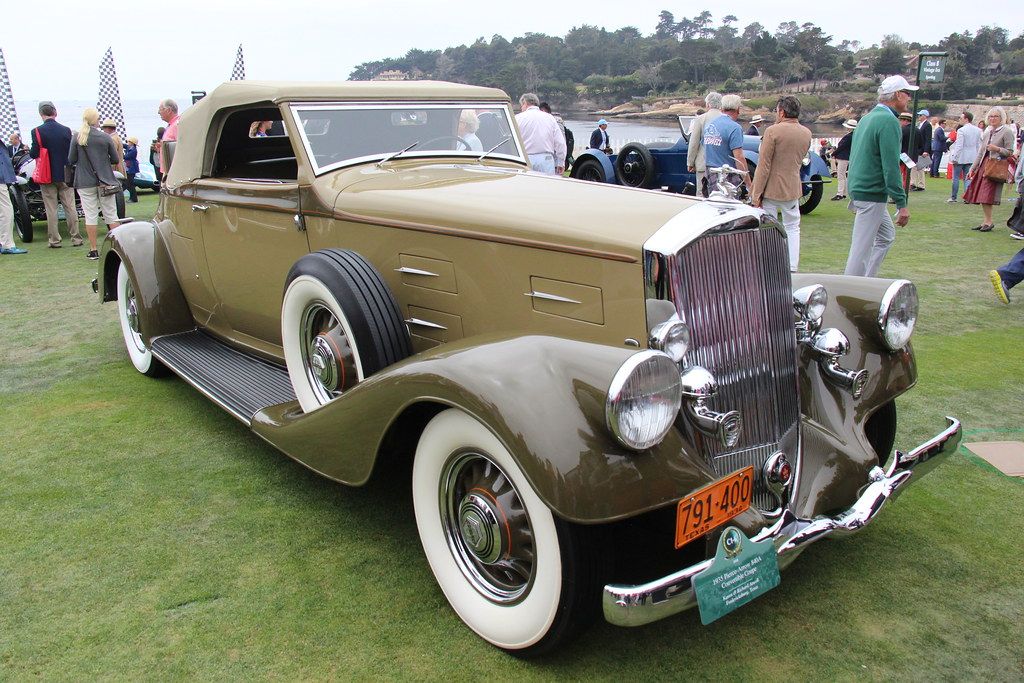
14. **Pierce-Arrow Silver Arrow**Concluding our magnificent tour of Art Deco automotive royalty, we arrive at a concept car that truly pushed the very boundaries of design: the Pierce-Arrow Silver Arrow. Unveiled to a captivated audience at the 1933 Chicago World’s Fair, this vehicle showcased an incredibly low and aerodynamic profile that was nothing short of revolutionary for its era. Its smooth, flowing lines and elegantly covered wheels presented a vision of transportation designed for a future world, a testament to an imagination unbound by contemporary constraints.
This vehicle was more than a mere car; it was a bold declaration of intent, a glimpse into what automotive elegance and efficiency could become. The Silver Arrow’s distinctive aesthetic emphasized seamlessness, minimizing visual interruptions to create a holistic, futuristic form. The covered wheels, in particular, contributed to its streamlined silhouette, making it appear as if it was gliding effortlessly over the road.
Each curve and contour of the Silver Arrow was meticulously crafted to convey a sense of speed and grace, embodying the Streamline Moderne ethos with an almost unparalleled purity. Its influence resonated deeply, inspiring other designers to explore the possibilities of aerodynamic form and function in the years that followed its dazzling debut. It was a beacon of design innovation, challenging perceptions of what an automobile could be.
As with many visionary prototypes of its time, the Pierce-Arrow Silver Arrow was produced in extremely limited numbers, further cementing its legendary status. Only three of these magnificent Silver Arrows were ever manufactured, rendering it an exceedingly rare and invaluable piece of automotive history. To witness one today is to connect directly with a pivotal moment in design, a tangible artifact of a bygone era’s dreams of speed, elegance, and a technologically advanced future. It stands as a profound reminder that some creations are simply too beautiful, too groundbreaking, to ever truly be forgotten.
Car Model Information: 2025 Alfa Romeo Stelvio Sprint
Name: Pierce Silver Arrow engine
Manufacturer: Pierce-Arrow
Production: 1933
Designer: Phillip O. Wright
Class: Ultra-luxury car
Engine: V12 engine,cvt
BodyStyle: Sedan (automobile)
Layout: Front mid-engine, rear-wheel-drive layout
Powerout: cvt
Transmission: manual transmission
Wheelbase: 139 in
Abbr: on
Weight: 2314 kg
Configuration: V12 engine
Displacement: 4618 cc
Bore: 88.9 mm
Stroke: 101.6 mm
Valvetrain: 2 valves / cylinder, OHV
Compression: 6.1:1
Fuelsystem: Stromberg Carburettors
Power: {{convert,175,bhp,kW PS,abbr=on
Categories: All articles needing additional references, All articles with unsourced statements, All stub articles, Articles needing additional references from September 2025, Articles with short description
Summary: The Pierce Silver Arrow is a luxury car produced by American luxury automaker Pierce-Arrow in 1933. Designed by Phillip O. Wright, it was introduced at the 1933 New York Auto Show. Five were built in a record three months.
Get more information about: Pierce Silver Arrow
Buying a high-performing used car >>>
Brand: Pierce-Arrow Model: Silver Arrow
Price: $54,000 Mileage: 889 mi.
Read more about: From Stanley Steamer to the Armored Beast: A Deep Dive into Presidential Vehicles That Made History
And so, our grand tour through the hallowed halls of Art Deco automotive design draws to a close. From the roaring elegance of the Bugatti Type 57SC Atlantic to the groundbreaking futurism of the Pierce-Arrow Silver Arrow, each of these magnificent machines was more than just steel and rubber; they were vivid expressions of an era where art and engineering danced in perfect, exhilarating harmony. These aren’t just cars; they are enduring legends, each a queen of glamour that continues to inspire awe, proving that true style, like true innovation, is utterly timeless. What a ride it has been, a testament to the fact that the golden age of automotive design continues to shine brightly, captivating new generations with its unapologetic opulence and audacious beauty.



